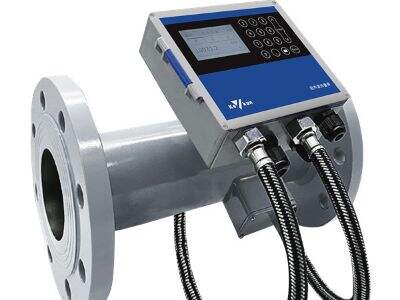An bhfuil brón ort riamh cad is é an méid a mheasaimid den uisce, óil nó gás atá ag imeartha trí phíobaí? Tá na n-uisceacha seo tábhachtach agus úsáideadh i gclár éagsúla de shaothair mar shampla íoslódála gás agus óil, ionad leigheas uisce agus fáctóirí bia. Ach conas a fhéadfaimid an chosán atá ag imirt trí na bpíobaí sin a fhoghlam? Mar sin cén chiall dona n-uisceacha seo a mhéadú — le h-uimhreacha speisialta a dtugtar cosán electromaghnetach orthu. Is speisialta iad mar gheall ar an gcumas acu na díobhail a mhéadú, na n-uisceacha a ndéanann agus nach ndéanann cur síos ar strom. Léigh an t-earra seo chun féin a chur ar aghaidh le cosán electromaghnetacha WEIBAO. Níos faide foghlamaoidh tú conas iad calibrú, cóiriú agus comhphlé cúinsí coitianta.
Cad is cosán Electromaghnetach?
Is féidir le comhaid eolach electromagaiticiúil a bheith gairid amháin a úsáidear chun an luas níos éifeachtúla a thomhas ar phríomhrudaí uisce agus gas i bhfriothaibh. Oibríonn sé trí drochshaoradh mionscóra elecrtreachta i dtroigh na n-uisce agus ansin tomhas an méid elecrtreachta atá á ghiniúint. Tuigsear go bhfuil an t-uisce níos spóigeach nuair a gcuiretar níos mó elecrtreachta. Tá an t-uisce ag bogadh níos spóigeach nuair a bhíonn níos mó elecrtreachta. Is iad na hiomparaithe is fearr de chuid comhad eolach electromagaiticiúil WEIBAO a sholáthraíonn réimsí leathan den chineál seo de chomhaid eolach electromagaiticiúil. Díríonn an uimhir seo ón gcás amháin saor in aisce i roinnt modail bunúsacha go dtí dhá i ngach modail níos éifeachtúla. Continúidtear acu a bheith i n-ús ábhartha nuair a théann teamperatúr nó sprioc chun líonraíocht uisce a thomhas go cinnte.
Cén Fáth agus Conas Calibrate do Chomhad Eolach le hAcmhainn Uafásach
Tá calibráid mar thoradh iontach faoi láthair. Tabhair cabhair dúinn féachaint ar an rud má tá sé ceart meadar electromagnétach úsáide ag léamh an rátar scointe. Is é an calibráid a dhéanamh comparáid idir na léamháin comhartha agus méid ceart faighte chun earráidí a sheiceáil. Calibráigh comharthaí WEIBAO le hionann fíor-mhéid stadúil, agus dírigh na cinnteachtaí i bhfoirmleabhar úsáideora. Ach ná bíodh brón ort mar gheobhaidh tú trí shainmhín seo na cinnteachtaí ar conas oibreann an phróiseas calibráid. Trí do chomhartha a chalibráil go rialta, déantar cinntiú go dtugann sé duit sonraí tábhachtacha agus deacair gach uair a úsáideann tú é. Is é an athchalibráid acuinn a chinntiú gur féidir leat an obair is ceart agus slánaithe a fháil as do chomhartha.
Soileadóireachtaí chun Cabhrú Le Tarlú Comhartha
Is mofharchúil an taispeántas do fheachaint air le haghaidh measaim chrua a fháil. Caithfidh tú an seansóir rith a ghlanadh go rialta chun aon díobh nó dirt a bhaint amach, a dhéanfadh cúlra ar na léamhálaithe. Is cosúil le glanadh do shuíomh é glanadh an seansóir; déanann sé gach rud a rith níos fearr. Chun cinntiú go bhfuil gach rud i gceart, seiceáil ar dtús go bhfuil do mhéadar rith suite go hiomlán agus go bhfuil gach earball plúite isteach agus slán. Is mofharchúil freisin teacht ar chúrsaí mar sin go bhfuil an seansóir rith gan aon chosaint. Bain triail as cinntiú nach bhfuil aon rud ag cosaint ar an rith den uisce. Is féidir leat freisin an tuillteán ar na n-earball a sheiceáil chun cinntiú nach bhfuil sé briste nó scadtha. Tá sé chomh maith againn an taighde eisiomra a sheiceáil, trí a bheith ag feiceáil go rialta é chun cinntiú go bhfuil sé ag oibrú go ceart.
Bonnieacht Earráidí Coitianta le Meadair Rith Electromagaitici
Is iad féin fíor-fhaisnéiseacha ar roinnt eisiúintí a d'fhéadfadh an tacaracht a chur isteach orthu. Eisiúint cinnte is gairid, tá bolbáin aer san uisce a dhéantar méadarú air. Is féidir leis na bolbáin seo tacaracht a chur ar na héagsún, ag tabhairt léamhálainn íseal ó thaobh tosaigh. Is ceann de na spriocanna é, gur féidir le h-inneall scagadh (degassing valve) cabhrú le scagadh na n-eisiúint seo trí phás speisialta a oscailt chun mhiréadóir elecrtromagaithe a ligean do na bolbáin atógtha sa uisce scipreabhus tríd os comhair an fheithreamh. Mar sin, faightear léamh níos fíorbhreise agus níos soiléire. Eisiúint eile cinnte d'fhéadfadh bheith ann ná fuaim idirlíonach ón gcóras mála ina bhfuil an fheithreamh. Chun an eisiúint seo a scagadh, déan cinntiú go bhfuil an fheithreamh agus na cáblaithe cuimsithe go hiomlán le feadhaint. Tabharfaidh sé seo cinntiú go dtiocfaidh an fheithreamh ar siúl go ceart, agus go mbeidh na torthaí a bhfuil tú ag iarraidh acu.
Na Nascanna Is Fearr Chun Cinntiú Go mBíonn Léamh Fíor Air An Ráta Iompair
Is mofhírinneach an laghadh snáithe don mhéid árdsráide a mhéasú go hiomlán agus glan. Caithfidh gach snáithe cosúil a bheith faoi láthair i gcás amháin chun cúramach a fháil. Tá deacracht eile atá ann níos fearr, ach is féidir leis an mbuíochas a thabhairt ar fad. Má tá sé ró-ghlan nó ró-thábhachtach, is féidir leis an mbuíochas a thabhairt ar fad. Mar sin, má tá snáithe cosúil ró-theiceannach, is féidir leis an méid árdsráide a shnámh, ag scríobh na léinte. Tá sé chomh maith le haon rud eile a bheith ag déanamh mar sin: má tá an uisce ag snámh, beidh sé níos dócha againn cad éard atá ag teacht amach as an gcuisiún. Beidh sé chomh maith againn an méid árdsráide a chur i bhfeidhm go minic agus a chalibhráil go minic chun cinntiú go bhfuil sé ag leanúint leis an obair ceart a dhéanamh. Cuirfear an méid árdsráide chun cinn go soiléiri agus go glan trí chur i bhfeidhm go minic.
Conclúid
In éadrom, WEIBAO comhaid rith electromagaitheach, cuimsitheach rith measáil don uisce i ngnéithe éagsúla do thionscal. Úsáid na daonlainn is fearr agus glacadh ar do chomhad rith chun cinntiú go bhfuil do mhéaduithe cothrom agus deacair. Calibráid réadúil agus cúraiceacht, i gceann amhráin a mhaireann fadhbanna faoi láthair, is gá leo chun taithí óga a fheabhsú chomh maith le héagsúlacha sórt rith measáil. Cad le fanacht? Cuir isteach ar WEIBAO comhad rith electromagaitheach anois. Anois is féidir leat tabhairt níos lú ar phlé d'fhorbairt agus níos mó ar dhéanamh an rud atá agat síor. Coinnigh an t-inneall seo i gcuimhne chun an méid is mó a bheith againn as do pháipéar beag.
 EN
EN
 AR
AR BG
BG HR
HR CS
CS DA
DA NL
NL FI
FI FR
FR DE
DE EL
EL HI
HI IT
IT KO
KO NO
NO PL
PL PT
PT RO
RO RU
RU ES
ES SV
SV CA
CA TL
TL ID
ID LT
LT SR
SR VI
VI HU
HU TH
TH TR
TR MS
MS GA
GA BE
BE MK
MK BN
BN LO
LO LA
LA MN
MN NE
NE MY
MY




